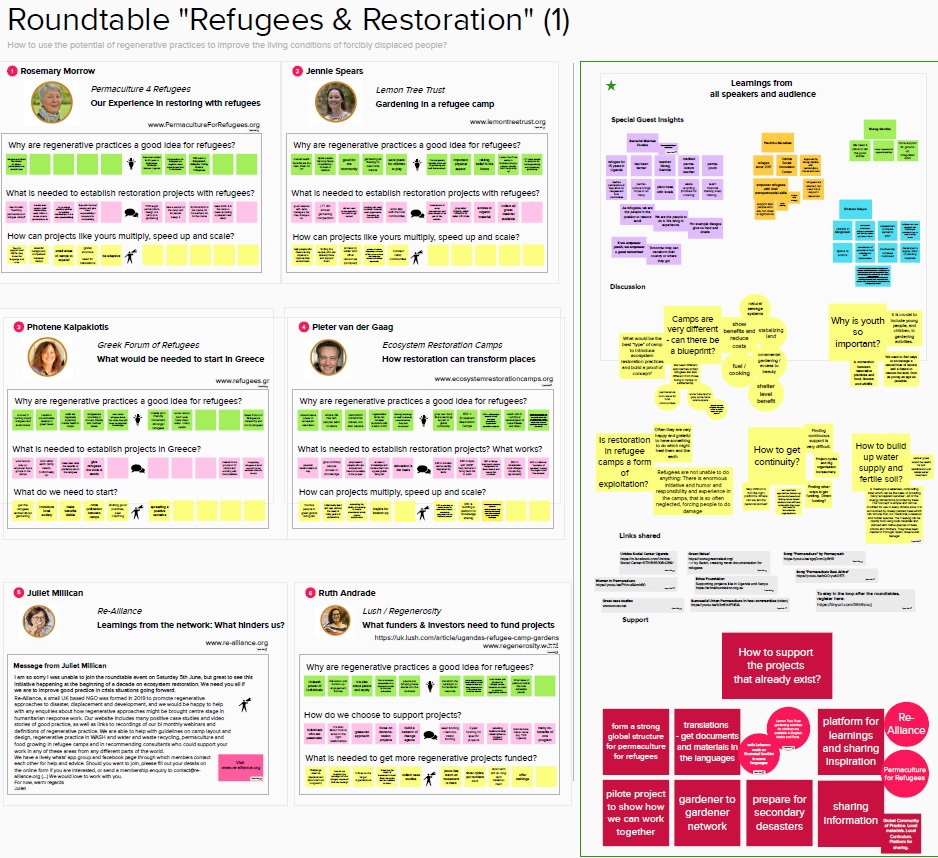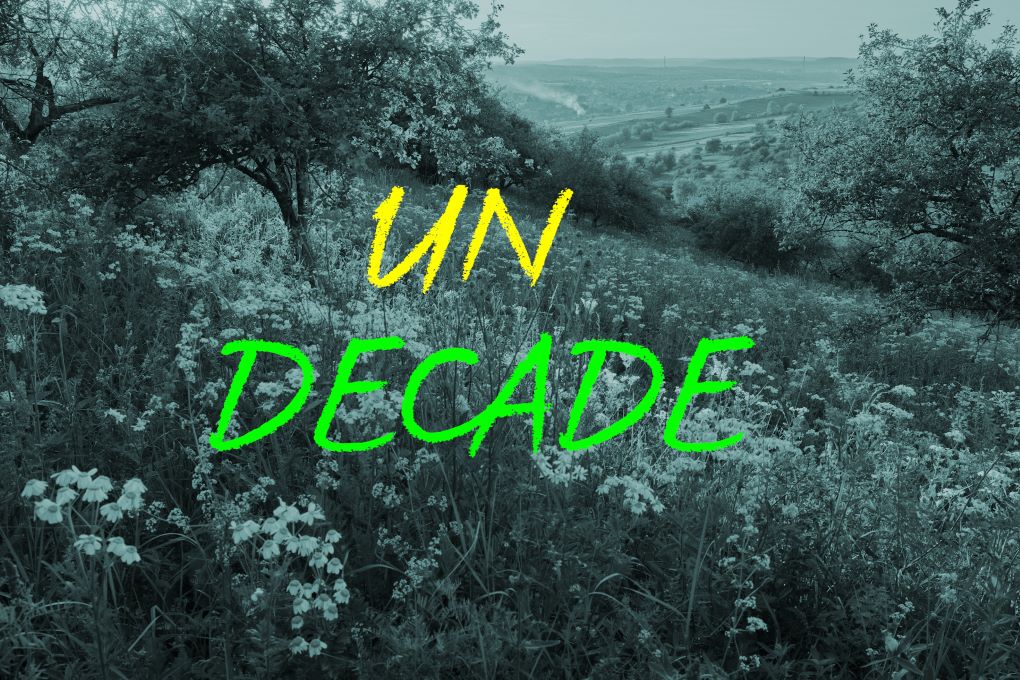Corporate sustainability goes hand in hand with many terms and…
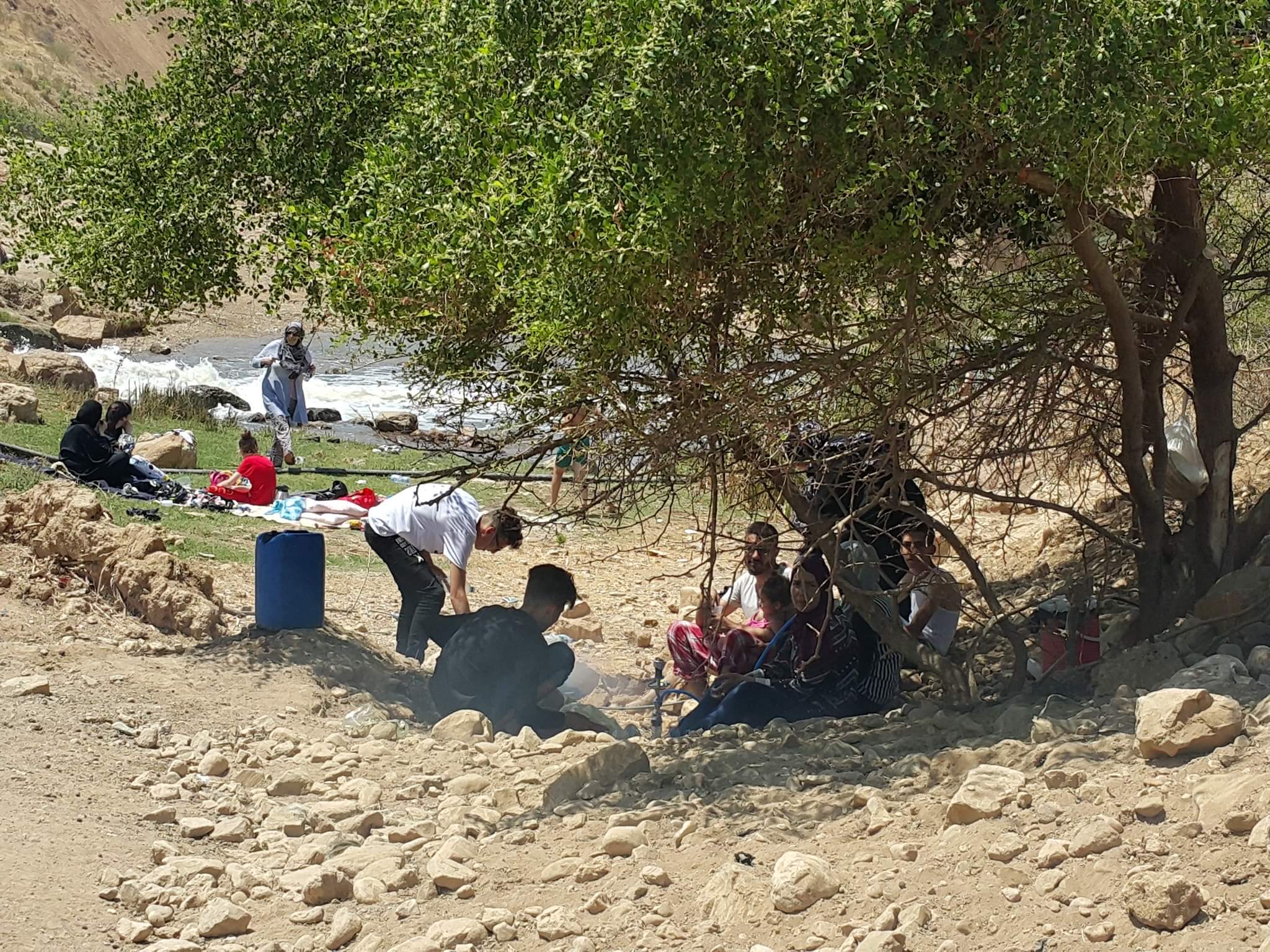
Refugees and Restoration
What if we transform refugee camps into regenerative camps? A summary of the roundtables on 5th June 2021, which Tina Teucher organized and moderated online.
In 2021, we celebrated the official launch of the UN Decade of Ecosystem Restoration. Land degradation is a major challenge the world has to deal with nowadays, and is already undermining the livelihoods of 1.5 billion people worldwide. Following the consequences of climate change, it is likely that more and more people will be affected and will be confronted with forced displacement as a result, in which finding shelter in refugee camps will be their only option. Their stay is often longer than anticipated and so they find themselves stuck in a permanent form of temporariness in often harsh environments. But… What happens if we combine the efforts of ecosystem restoration with humanitarian aid and development, empowering refugees with the tools and the knowledge to build a better life? What if we transform refugee camps into regenerative camps?
Two roundtable discussions on the 5th June 2021, have shed a light on this question and the possibility of combining restoration efforts with refugee assistance. Restoring and re-greening the earth has many benefits, socially and also economically. Tina Teucher, the initiator and facilitator of the event, pointed out in her introductory presentation, that the restoration of degraded ecosystems can generate an additional value of 9 trillion US Dollars and remove 13 to 26 gigatons of CO2 from the atmosphere. Additionally, bold action and more durable refugee assistance is needed as the number of forcibly displaced people has already reached record-levels. Nature-based solutions and ecosystem restoration activities have an enormous potential to enhance the living conditions of refugees, ecologically as well as mentally. The encouraging news is that good examples of knowledge and experience already exist!
Diverse stakeholders from experienced projects, refugee initiatives, development aid organizations, funders and investors, examined in the roundtable discussion, how we can effectively collaborate and inspire each other, nurture already existing solutions, share knowledge, and eventually look for possibilities to scale-up good practices from the bottom-up (and top down). This article is a summary of these roundtable discussions, and serves as a starting point to document and share knowledge and progress about the Refugees and Restoration initiative.
Restoring Earth, Restoring Dignity

The opening speaker of the first roundtable discussion was Rosemary Morrow, an internationally respected pioneer of the permaculture movement who has trained villagers and farmers from war-torn nations, during and after conflict, as well as introducing permaculture in refugee camps. According to Rosemary, refugees are often forced into inferior situations and practicing the art of permaculture can give back some of their ownership. She fiercely believes that restoration efforts have the potential to not only restore the environment, but also human dignity by providing new hope and meaning in the lives of displaced people. Activities which are also carried out by permaculture for refugees, an international working group of permaculture teachers, who aim to support refugees in transforming the places where they live into productive permaculture designed communities. By improving soil fertility and the water cycle, the seeds for a healthier future can be planted.
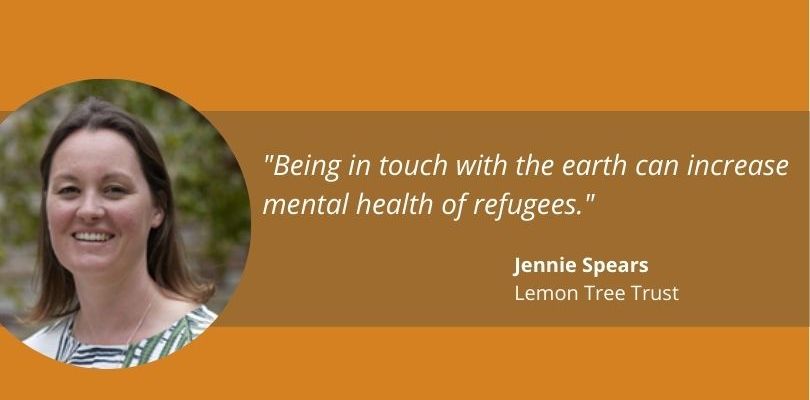
This was also confirmed by Jennie Spears, who works with Lemon Tree Trust. Just like any other human being, refugees want to engage in meaningful work. In her experience they often do not need encouragement or motivation, but merely tools and education to get started. Therefore, Lemon Tree Trust works together with strong, local organizations on gardening projects and competitions, ‘transforming refugee camps, one garden at a time’. The main driver behind these projects has not been ecosystem restoration, but rather the mental health benefits that come with being in touch with the earth. Gardening in this sense may be perceived as a powerful therapeutic tool, used to learn to cope with isolation, overcome traumatic experiences, and producing beauty, belonging, and food security along the way. For a short film about their work in Domiz camp, Iraq, click here.
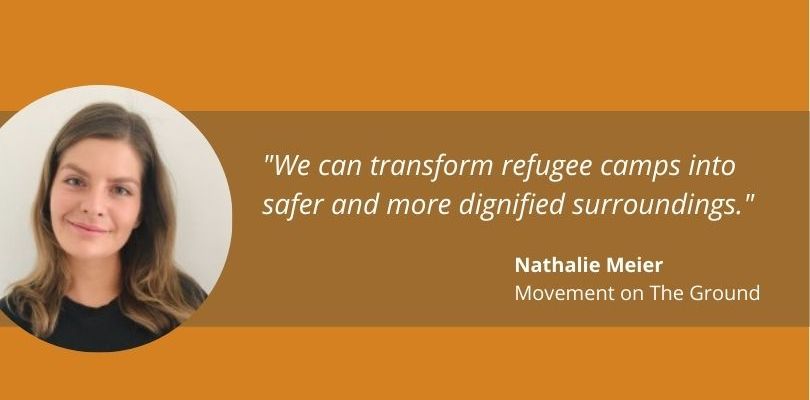
According to some, such mental health benefits that come with caring for the environment deserve far more attention. This is also a reason why Movement on the Ground is working with a camp to campus philosophy, that Nathalie Meier explained as a concept for transforming refugee camps into safer and more dignified surroundings with and for refugees and their host communities. During her speech she pointed out that, of course, we should not forget that the first stop of the humanitarian and development aid train should be to meet the fundamental needs of the refugees. “These needs have to be met before people are able to think or care about other things, such as waste reduction”.
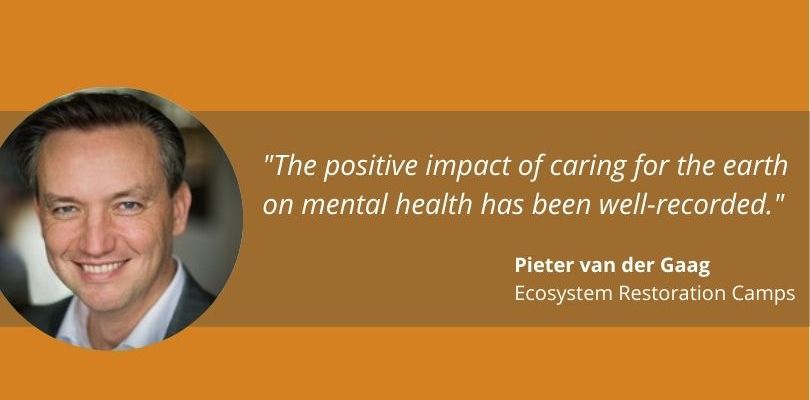
But getting engaged with gardening activities might help people with a sense of satisfaction and direction. In fact, Pieter van der Gaag commented that “the positive impact of caring for the earth on mental health has been well-recorded”. As Executive Director of the Ecosystem Restorations Camps Foundation, who co-hosted the events, he shared the insight that participants of Ecosystem Restoration Camps have experienced some sense of relief of burnout or trauma as a result of their participation in restoration activities. Caring for and reconnecting to the earth has the potential to facilitate a reconnection to one’s self.
Global Structure, Local Practices

As project coordinator of The Greek Refugee Forum, connecting actors who wish to aid in the Greek humanitarian crisis, Photene Kalpakiotis has been thinking about how to best connect the two burning topics of refugees and environment with each other. Her answer: education and self-organisation. “Most likely”, she said, “the environment and climate change are the last thing on the mind of refugees”. Therefore, it is important to empower refugees to take initiative themselves through self-advocacy. This way, a sense of purpose and ownership can be stimulated. In addition to self-organisation, Photene stated that proper education is important to focus on as well. “Through education, knowledge can become transferable by staying with the individual wherever they go”.
Also the importance of working together with highly motivated, caring individuals and building trust relationships for project efficiency and sustainability was stressed. A lot of ideas and solutions are already out there, and nurturing and working together with local individuals and organizations enhances the creation of real connections and relationships with refugees as well as their host communities. Such trust building efforts are necessary to make a sustainable impact by taking down the invisible wall of the confined spaces that most refugees live in.
Hence, it is important to empower and scale-up local organizations and initiatives. After all, they are often the ones who know the language, the area, the people, the specific needs, and how to best meet the local needs. Luckily, inspiring examples of local organizations and entrepreneurial individuals can be found around the world. Some of them were present at the roundtable discussions to enlighten participants and panelists with their experiences.
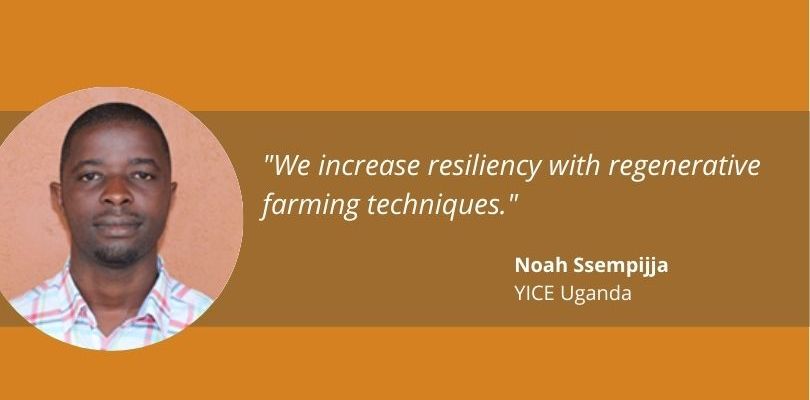
Noah Ssempijja, for example, is Founder and Director of the Youth Initiative for Community Empowerment (YICE) in Uganda. Uganda is home to 1.4 million refugees, the majority coming from neighbouring countries such as the Congo and South Sudan. Uganda is often called a ‘refugee paradise’ because the country adopts a unique policy which provides refugees with a small piece of land for farming and housing purposes. YICE promotes food security by working with small-holder farmers on these pieces of land through several interventions, such as providing training in regenerative farming techniques, how to make organic fertilizers, and water harvesting. They also aim to increase resiliency by enabling savings in small groups so refugees are better prepared and equipped to deal with unexpected shocks.
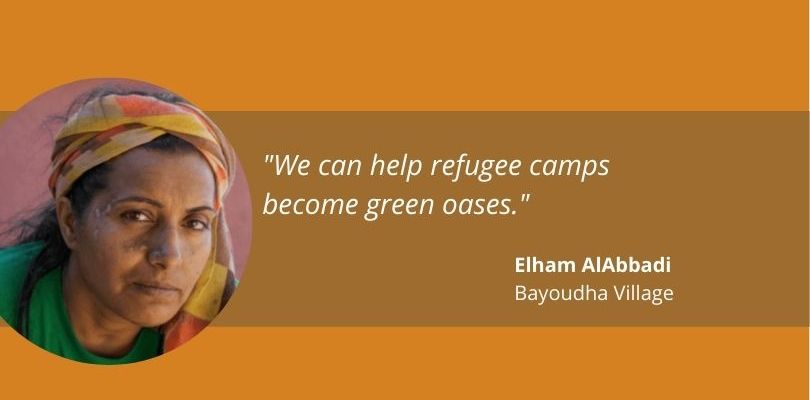
Also, a Jordanian environmental pioneer Elham AlAbbadi from Bayoudha Village was present during the event. Just like Uganda, Jordan is a country with a very high percentage of refugees. At the same time, the region is struggling with difficult environmental circumstances such as water shortage. Faced with these issues, Elham enthusiastically shared that at some point in time, she gathered with others under an oak tree and agreed to work together to restore mother earth. Now farmers are her teachers, and she has been working on rooftop gardens and managed to grow more than 10,000 fruit trees and medicinal herbs in refugee camps. “Maybe we should not call refugee camps refugee camps, but oases in the desert instead. Or green hubs all over the country. This is how I imagine it”.
In addition to the inspiring speakers of the roundtable discussions, some other special guests shared their inspiring stories with the audience as well. For example, Ehsanel Hoque from the UN Refugee Agency UNHCR Bangladesh shared insights from a project which they undertook with IUCN to prevent human-elephant conflict in the settlement, making use of the entrepreneurial skills of both refugees and host communities to show that conservation, ecosystem restoration, and refugee protection can go hand in hand. For more information about the UNHCR-IUCN project, click here.
Also Bemerick Bisimwa Dusabe and Paulinho Muzaliwa – who are refugees themselves – stressed the potential of combining refugee protection with ecosystem restoration. “As refugees, we are the people in the position to restore land”, Bemerick said. As an accredited permaculture educator, he teaches across East Africa to both refugees and host communities. “Permaculture brings hope to so many. For example, mangos trees give us both food and shade”. Bemerick and Paulinho are not only teaching the art of permaculture, but also waste recycling, financial literacy, and soap making as well. “We should empower refugees with their entrepreneurial skills, also people who are not close to agriculture”, Paulinho explained.
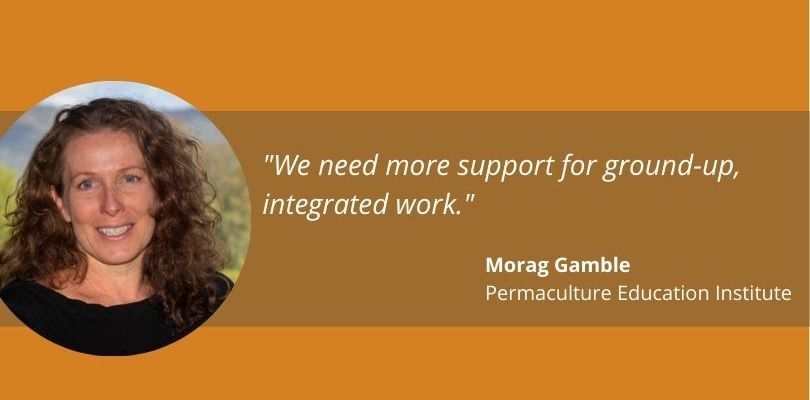
Morag Gamble from the Permaculture Education Institute has run different programs with refugees in East Africa and also offers free material and videos on her website. She said that there are many requests for apprenticeships and sees a need for more support for ground-up, integrated work.
Sharing Knowledge, Showing Impact
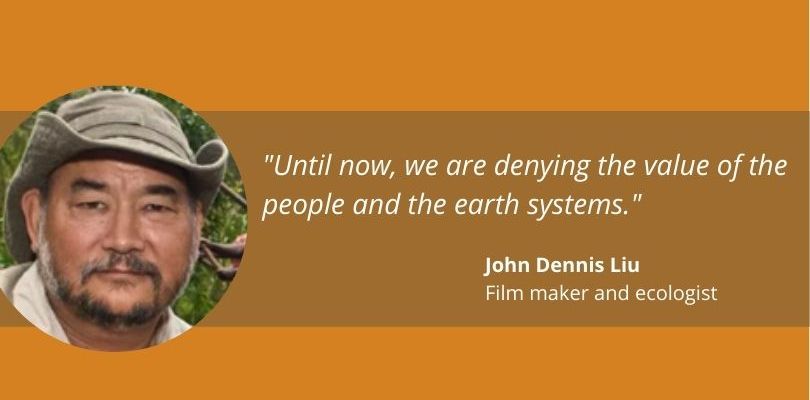
But… how are we going to share and scale-up the good practices? A promising tool which can be better used in scaling-up good practices are media and communications. According to John D. Liu, they are necessary to transmit and accumulate knowledge throughout time. As an internationally known environmental documentary film maker and ecologist, he is best known for his award winning ecological documentaries “Green Gold” and “Hope In A Changing Climate”. In 2017, John founded Ecosystem Restoration Camps foundation, which is a global movement of people creating an abundant earth through ecosystem restoration and sustainable livelihoods.
John D. Liu believes that we do not need to wait for policy makers to take action for the environment, we can all start making a change by ourselves. A good way to facilitate such a change is by sharing knowledge and inspiring each other. “We need to observe and take the time to reflect and consider what is really important rather than start grasping at this policy, that policy, this action, that action, etc. Actually we need to sit together with all the people involved to create a collective intelligence”, he said.
Thus, communication is key, and a very important element is to ask the right questions in order to get the message right. “What we are saying at the moment is that the economic capital that is going into addressing the environmental problems is valuable, but we are denying the value of the people and the earth systems. We should not only look at money flows, but also at value creation”, said John. A framework which not only captures the economic value of landscape restoration does already exist. The 4 returns framework is a science-based framework focusing on the return of financial capital, social capital, ecological capital, and inspiration. In business terms, the value proposition of restoration in refugee camps could be to transform refugee camps from a place of misery and hopelessness to a place worth living with real hope, jobs, community sense and ecosystem restoration.

One of the roundtable discussions featured Maya Hennerkes from the European Bank for Reconstruction and Development, and she explained that impact investing and the push for the environmental and social perspective into funding has indeed become a growing trend over the years. Nevertheless, she warned that “investors will be investors, and they are always looking for bankable projects”. Risks play a central role in finance, meaning there needs to be a thorough understanding of the business model. Generally speaking, bankers do not like to fund projects they cannot measure.

This view was confirmed by Ruth Andrade, who also brought a funders’ perspective to the roundtable. Ruth not only works for the natural cosmetics company Lush (supporting regenerative projects like YICE with its Spring Prize), but is also part of Regenerosity and a co-founder of Re-Alliance; a collective of practitioners bringing regenerative design to the humanitarian sector. According to her, ecosystem restoration projects need to make all the information and experiences out there measurable and presentable by showing the cycles and put numbers on them in order to prove that the return of investment is there. Although she stressed that doing business should also be about equity and justice, Ruth and Maya both emphasized that measuring impact through one or more demonstration project(s) is key to unlocking the finance flow and to make larger scale impact happen.
Next Steps, Ways Forward
The momentum is here, the motivation is here, and the people with the right knowledge and experience are here. It is time to take some action! Possible ways to move forward which came forth during the roundtable discussions were:
- To create a network/platform where knowledge and experiences can be shared easily worldwide with all practitioners.
- To set-up one or more demonstration project(s) which measures the impact in such a way that the outcomes will be able to unlock financial flows for similar projects.
- To organize a follow-up event in autumn 2021 to monitor the progress of this initiative and to keep inspiring each other.
- To keep each other informed in the meantime through sharing interesting links and providing space for more in depth interviews with inspiring actors.
Do you want to get involved, or simply keep informed? Sign up here to receive updates!
Article by Melissa de Raaij, co-edited by Tina Teucher
Visit Generation Restoration’s website and become part of the movement!
Watch Roundtable Recordings on Youtube!
Explore Key Messages on one Page!
Title picture: © Bayoudha Village / Elham AlAbbadi
Tina Teucher is a “Sustainable Matchmaker” and professional moderator. She strives to support sustainable projects in spreading their ideas, growing, scaling and multiplying and inspires at online and on site events. Together with a growing team, she is dedicated to bring the vision into a reality: Transforming refugee camps into places of regeneration and hope. In the UN Decade on Ecosystem Restoration, Tina Teucher wants to bring international stakeholders together. Another iniative she co-initiated is the Future Cooperative, where she is currently a member of the supervisory board. As a consultant, she is therefore a good point of contact in terms of cooperation.
If you would like to read articles by and about Tina Teucher on a regular basis, simply subscribe to the newsletter. It is published about 4 times a year.


